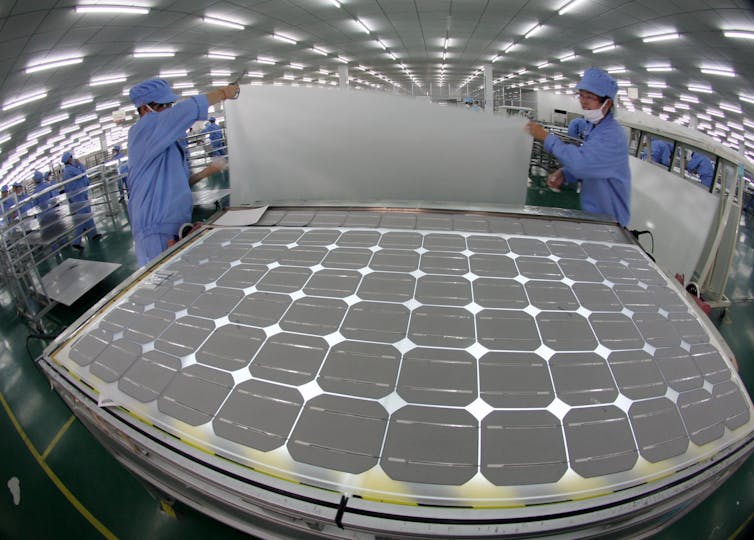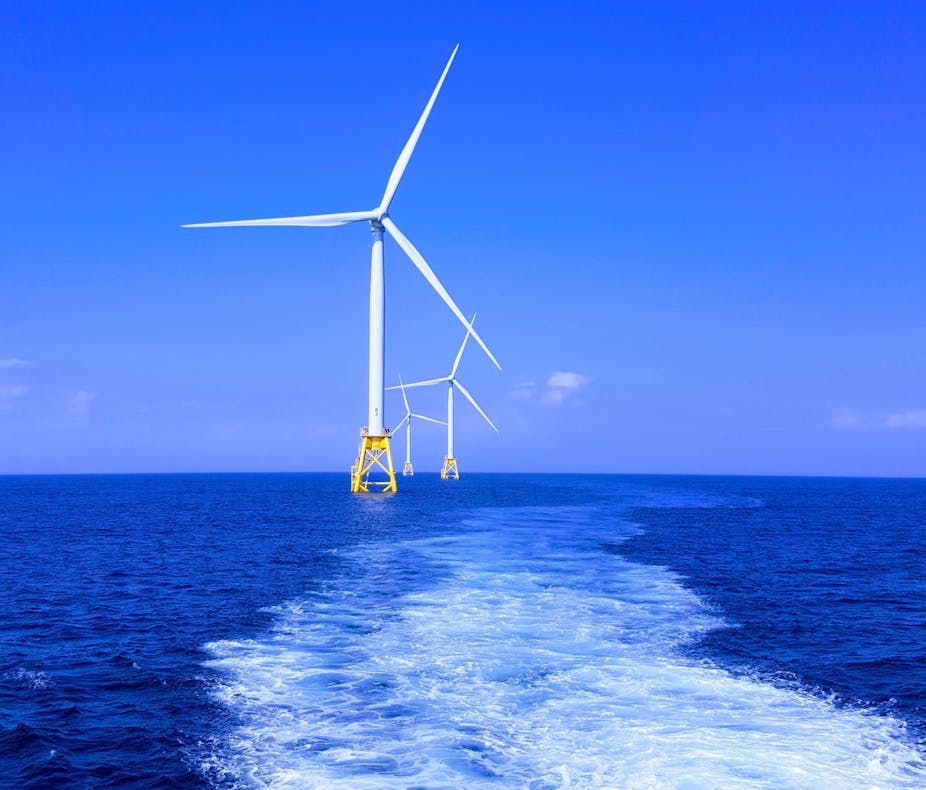The EU is preparing to abandon its longstanding restrictions on state aid to take on US and Chinese subsidies over green technologies. European Commission president Ursula von der Leyen is spearheading a new commitment from EU leaders to “act decisively to ensure its long-term competitiveness, prosperity and role on the global stage”.
She has talked about the need to counter hidden subsidies from the Chinese, both in green tech and in other sectors, though the trigger for the EU’s new approach is really President Joe Biden’s Inflation Reduction Act (IRA). This has committed the US to a record US$369 billion (£305 billion) to green its economy, including using tax breaks and subsidies.
It effectively tears up the international consensus around not using state aid, embracing what the US has railed against for years. The Economist has said that globalisation is no longer about racing, but racing and tripping others.
The EU is now proposing to introduce its own tax credits and subsidies for cleantech companies, as well as fast-tracking regulation in this area.
Meanwhile, the UK has been coming under pressure from the likes of car manufacturers to respond. So far, it has been trying to find exemptions to the US’s general approach of only offering incentives to products made in America, while also claiming the UK has no need to subsidise these kinds of areas because it is already ahead.
The economics of this drift to protectionism are worrying. Our recent research on the effects of state subsidies in China suggest that such policies could do the US and EU economies more harm than good overall.
What the research says
Since the dawn of the industrial revolution, states have played a significant role in developing their economies. China is the recent prime example, where the use of subsidies to develop particular industries such as electric cars or solar panels has been highly visible.
India seems to be moving in the same direction. The government is paying half of the cost of making computer chips, among a variety of incentives to encourage investment in different sectors.
Equally, in the developed world, government procurement has driven many world-changing innovations. Whole sectors such as biotech and information technology relied on government procurement to get started. America’s Silicon Valley originally grew on the back of military contracts, for instance.

Research in this area does acknowledge a case for subsidising infant industries in which a country wants to specialise. China’s state subsidies in the steel and solar panel industries would be a good example.
Yet there is a price to be paid: the money a government spends means that less will be available for helping its citizens in other ways. For example Brazil’s wheat-industry subsidies in the 1980s were estimated to have produced a net loss of 15% to welfare spending.
Around the same time, it was estimated that if the EU removed the common agricultural policy, the extra money available for government spending could increase real incomes by between 0.3% and 3.5% as a proportion of GDP. Findings like these probably explain why the World Trade Organization has discouraged state aid for decades.
Consequences
The new green subsidies will create winners and losers at different levels. Within the EU, for example, it will un-level the playing field between member states. Those that can afford to spend more on their green tech industries will potentially crowd out those with less.
Even within a country, there’s unlikely to be a win-win. Our research team has recently published a paper about China’s subsidies, using a new approach that makes it possible to estimate the direct and indirect effects on subsidised and non-subsidised firms at the same time.
This is the first time anyone has looked at subsidies in this way. Our project looked at 1998-2007, since those were the years where the necessary data was available.

We found that subsidised firms become relatively more productive, thus making them more competitive. Yet firms that are not subsidised can see their productivity growth reduced.
The determining factor is whether they operate in a geographical cluster alongside subsidised firms. When more than a quarter of firms in a cluster in China were being subsidised, the remainder suffered.
Those losing out were typically foreign-owned firms and those owned by the Chinese state, while private Chinese firms were the beneficiaries.
When we aggregated all the data, it showed that this negative indirect effect tends to dominate. In other words, subsidies produce unintended losers and make the market less competitive and more inefficient as a whole.
The bottom line is, subsidies are not without problems, even for China. In the last decade we have seen what “losers” can do to an economy, or a society - think of movements towards populism and autocracy in many places.
Therefore, there needs to be a more thorough debate about the benefits and costs of subsidies before states apply them, and some carefully designed policies to prepare for the potential losers.

